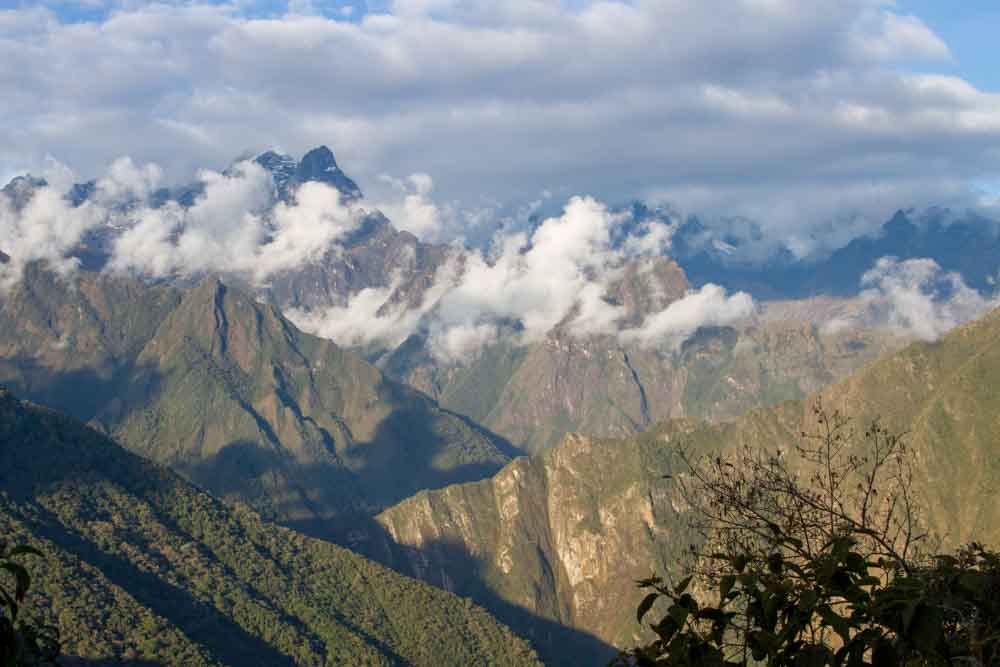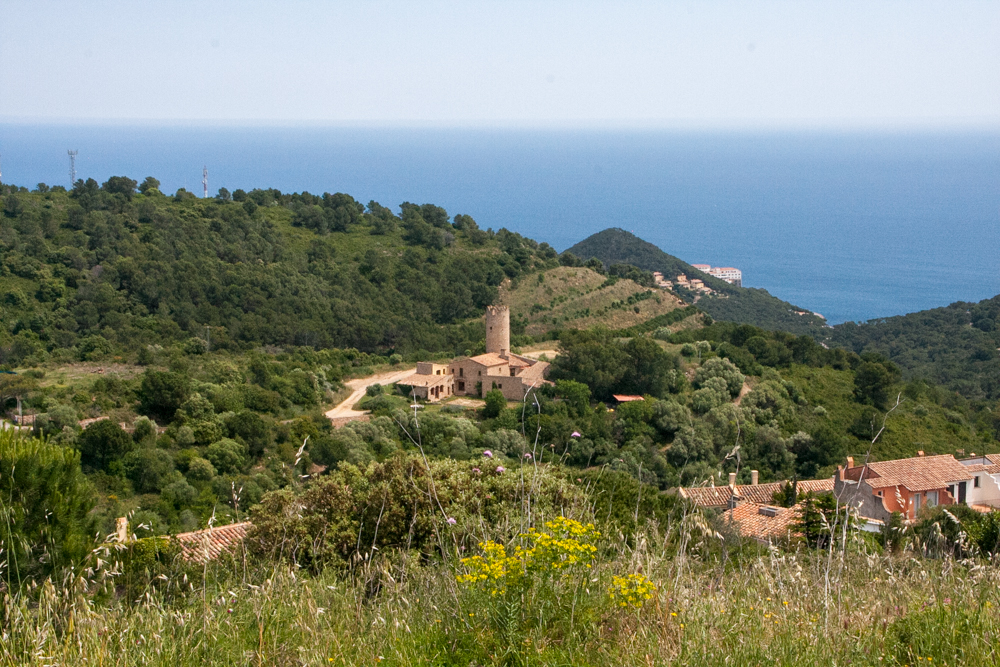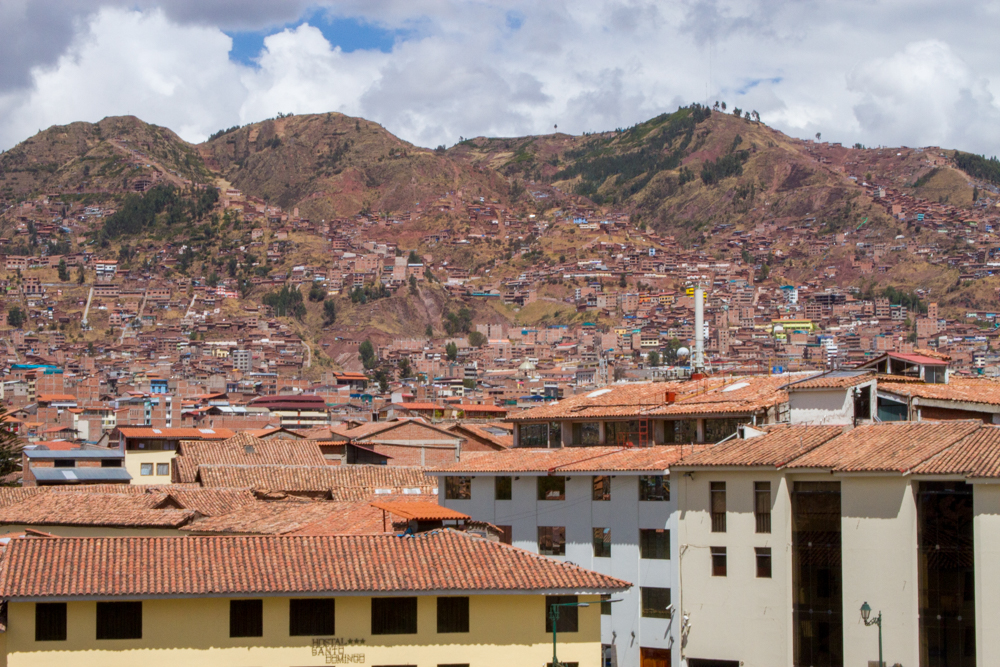
Cusco, which is among the world’s highest cities, sits at an altitude of 3,390m (11,152) above sea level. Known as the former capital of the once-great Incan empire, Cusco is the gateway to the Sacred Valley, the Inca Trail, and many other historical sites, such as Machu Picchu. The culture and many of the local practices are rooted in a blend of both Incan and Spanish traditions. With a population of about 350,000 and a designation as a UNESCO World Heritage site, Cusco provides visitors with a wealth of historically and culturally significant attractions.
Here are our Cusco travel tips to help you plan for and enjoy your visit.
Highlights of the City
Plaza de Armas – This is the central square in the city and tends to be a great place for gathering and people watching. A statue of Pachacuti, the Incan ruler that established much of the empire sits at the center of the square. There are a number of restaurants and bars that surround the plaza, providing plenty of opportunities to hang out. We spent plenty of time checking out the shops and just people watching in the plaza.
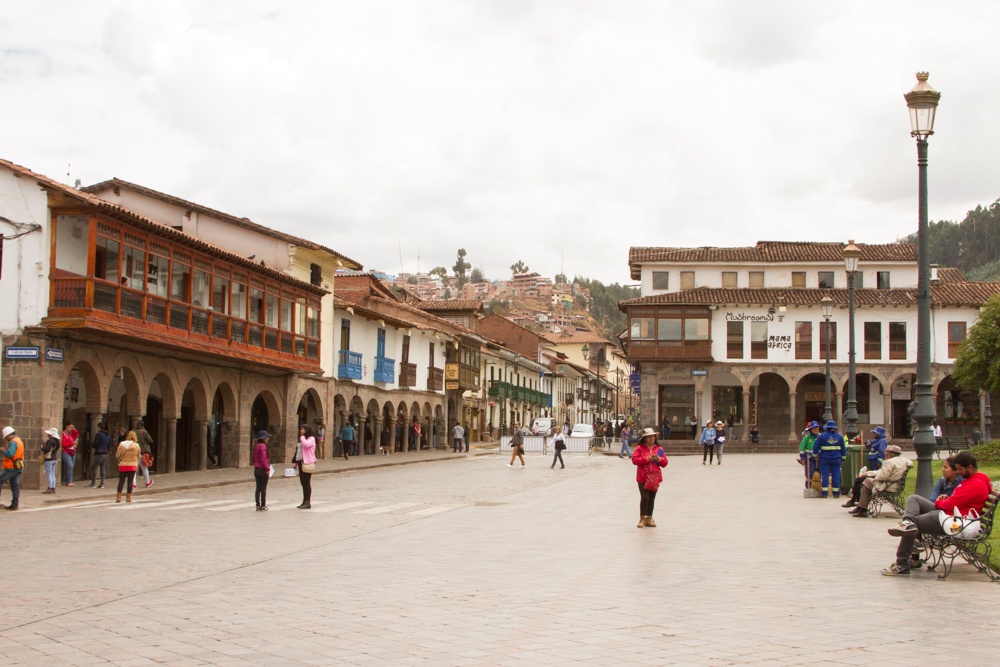
Try the Cuy – Cuy, which is actually roasted or fried guinea pig, is considered one of Peru’s most coveted delicacies. I have to admit that we were a bit hesitant about the idea, which is unusual for many people from other counties. however, we did enjoy the meal, which was a bit richer than typical chicken, and more like rabbit or duck, for those that are familiar. You will likely not find cuy available outside of Peru so be brave and give it a go. Typically served whole, you can ask to have it cut and prepared before it’s served to your table. If cuy is not your style, you might consider another local favorite – alpaca steak.
San Pedro Market – One of the best ways to experience the local food culture in a city is to visit their market. The San Pedro market is no exception. This open-air market has an incredible variety of local foods, fruits, and vegetables, including some very specific varieties of corn and potatoes that we’ve never seen outside of Peru. You can also pick up lunch for any number of food vendors on the location, or even grab a back of coca leaves to alleviate your altitude sickness symptoms. Just be sure not to bring them home with you as they are illegal in many countries.
Visit the Ruins – Cusco has many archeologically significant ruins in and about the city boundaries. This includes the remains of fortresses and temples and some agricultural sites. Visiting these ruins will provide you with an appreciation for the impressive social and technical capabilities of Incans. Hiring a private guide is a good way to see these sites and learn about their historical significance. We spent two days walking the city and visiting many of these locations.
Take a Machu Picchu Detour – If you’re not inclined to hike the Inca Trail, you can take a 75 km trip from Cusco to Aguas Calientes by train or bus. You can also walk, but we wouldn’t recommend it! Aguas Calientes is about 400m below Machu Picchu. From there you get to take a bus up to visit the ruins. Check out our post on Hiking the Inca Trail for more information about Machu Picchu.
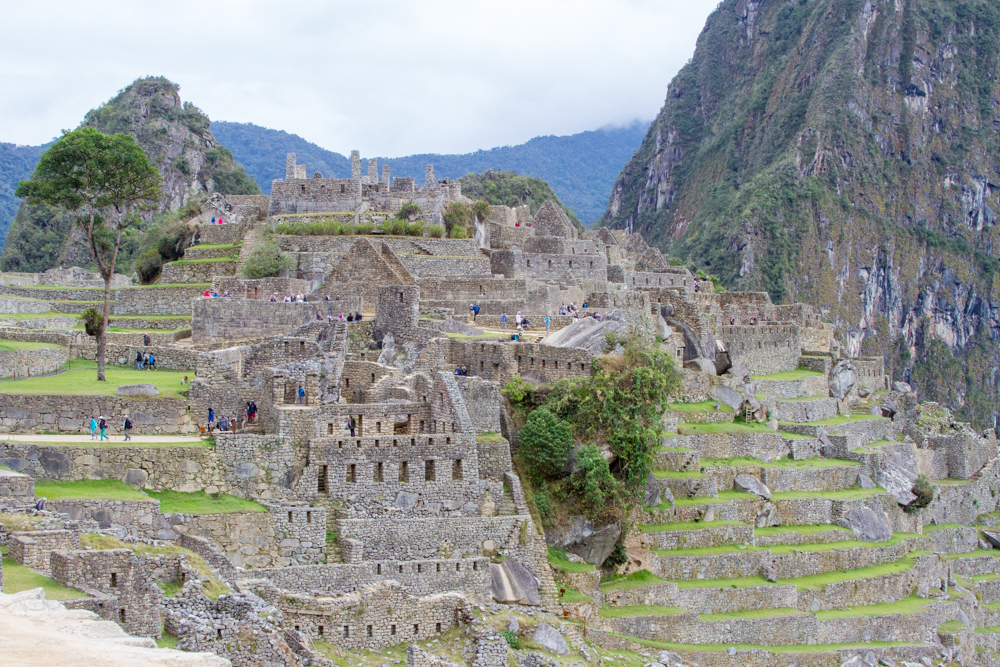
Check Out the Cathedral – The Basilica Cathedral of our Lady of Assumption is perhaps the most prominent landmark in Cusco. Originally constructed by the Spanish to help displace the local Incan religion, this 4,000 square meter church took over 95 years to construct. Located right near the Plaza de Armas, the cathedral contains many relics, statues, and other objects considered to be both religiously and historically important.
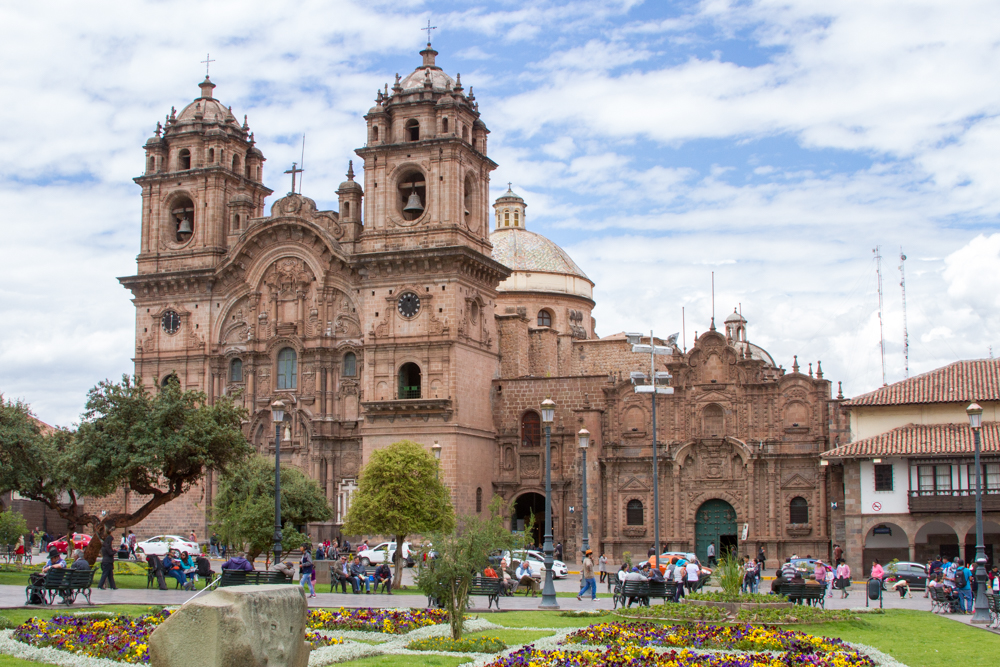
Cusco Travel Tips
Altitude Sickness is Real – Be sure to respect it. The altitude in Cusco is significant and the air is less dense and naturally has less oxygen. How our bodies respond to this stress is very individual. In fact, it can vary from one trip to the next for the same person. It is very common for Cusco visitors to experience some form of altitude sickness. This is typically mild. My husband experienced it for a few days and largely described it as having a mild hangover. That said, serious altitude sickness can be dangerous and will require the attention of a doctor. For more information check out WebMD’s post: Altitude Sickness: What to Know.
Have a Home Base – Cusco is a good home base for travels in and around the Incan ruins and related sites. It’s largely centered in the region of the Incan dynasty and provides a good selection of accommodations including hotels and AirBnB or VRBO.
Check the Weather – While the climate is pretty moderate, it’s important to check the weather and dress for the occasion. Nights can be cold during their winter months and it can be rainy. Being prepared for whatever weather you may encounter will definitely help you enjoy your visit. We visited in September and the weather was cool but dry, and generally pleasant.
Just Say No – To the tap water! Even the best municipal water is not suitable for consumption by visitors. The bacterial content is something that most of us are not accustomed to. You can put a big damper on your trip if you get a case of lower intestinal distress. Also, be sure to watch for vegetables washed in tap water or ice in a drink, as they too can bring the bacteria into your system.
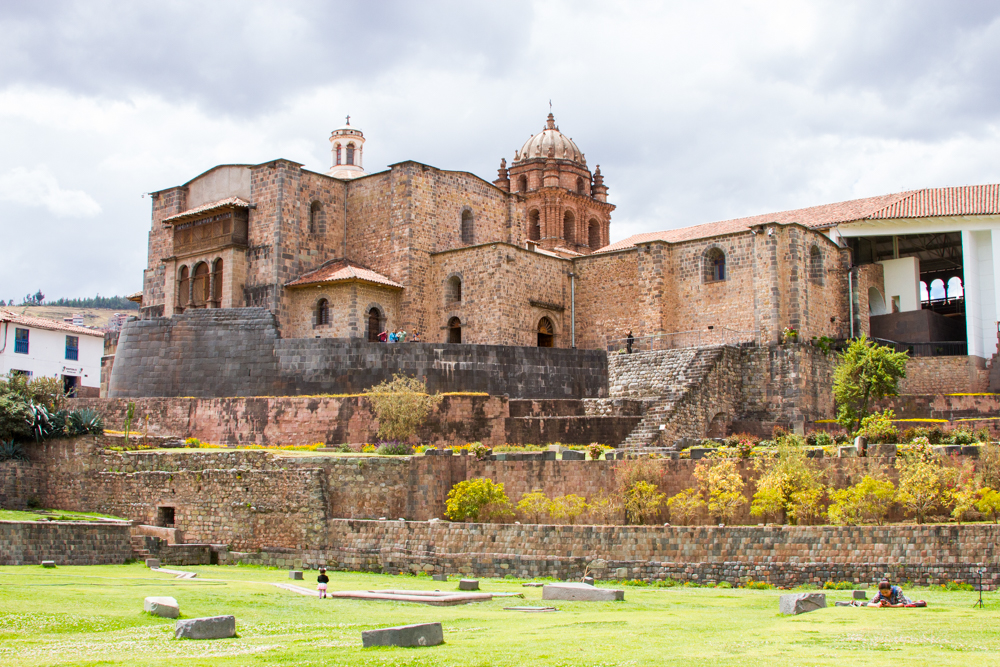
Man’s Best Friend – One of the things that we noticed while in Cusco is the number of “street dogs” that seemed to be in the city. Most of these dogs appeared to be homeless and roaming looking for food, social contact, and a place to sleep. I wouldn’t recommend petting or feeding them as they will tend to be rather persistent. It’s important to remember that many of these dogs do not have homes and most do not have veterinary care. This is actually a problem in many areas in Peru. We didn’t have any issues with the dogs but it’s important to be cautious.
“It is better to travel well than to arrive.”
~ Buddha
Costs a Bit More – Typically accommodations, meals, and the like are more costly in Cusco than in the other smaller towns and villages. That said, we found these to still be rather reasonable. Doing a bit of advanced planning to be sure that you’re not caught short of funds is the best way to deal with this situation.
Walkable But Transportation is Available – Walking around a city for a full day is tiring enough, let alone in a city at more than 11,000 feet above sea level. Walking is the most convenient way to get around in Cusco but can certainly take some energy and stamina. In fact, we found the city to be very walkable. There are taxis available but you need to be prepared that the drivers might not speak your language unless it’s Spanish. The bus system is less expensive but would be difficult for visitors to navigate the routes and schedules. Car rental companies are available in Cusco but you need to be prepared for loosely interpreted driving laws and parking difficulties, especially in the core city areas. Uber is also available in most of the city, which can be a good option and helps to overcome language differences.
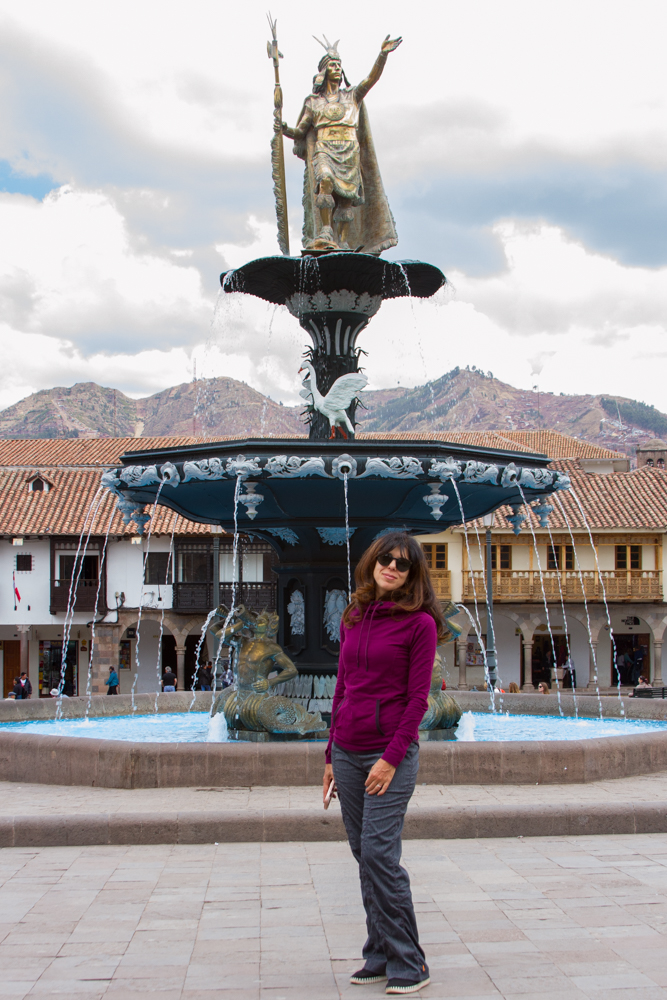
Mind the Sun – Be sure to use a lot of sunscreen and apply it often. The sun is stronger at higher altitudes and a good coating of high SPF protection is definitely advisable. In fact, this is true pretty much anywhere you are in Peru. This is particularly true if you are fair-skinned or visiting Peru during the winter months in your home country.
Pack for the Day – It’s very wise to carry a day pack when touring the city. This can be a lightweight pack with just your essentials such as bottled water, sunscreen, a snack or two, medications you might need, your camera, or any other essentials. A day pack can also provide a safer location for storing your cash and other valuables. Just be sure to follow typical safety practices and keep the pack with you at all times.
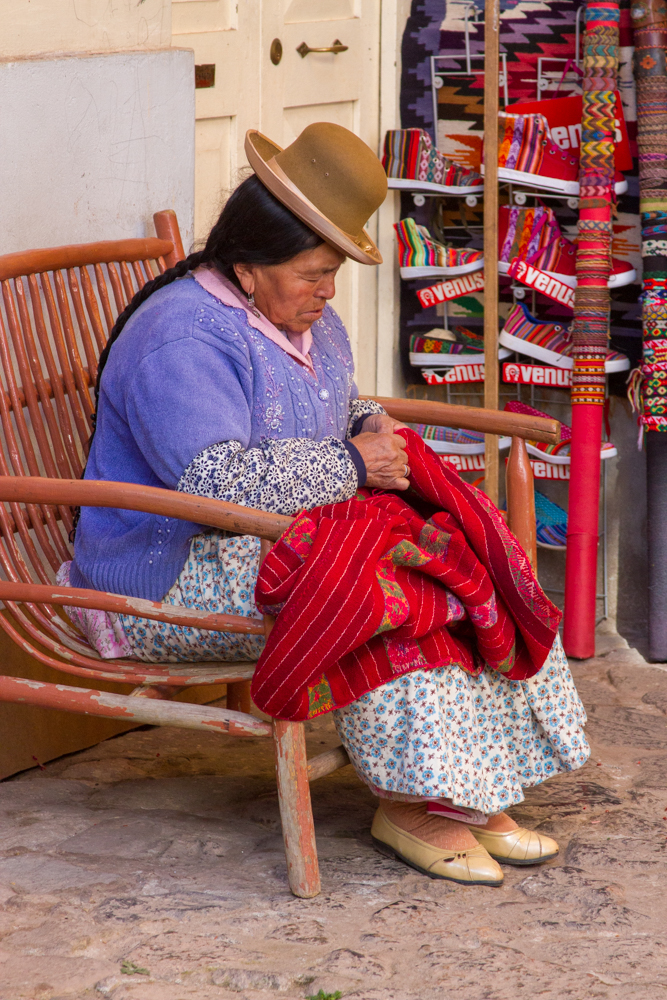
Making Traditional Crafts for Sale at the Market
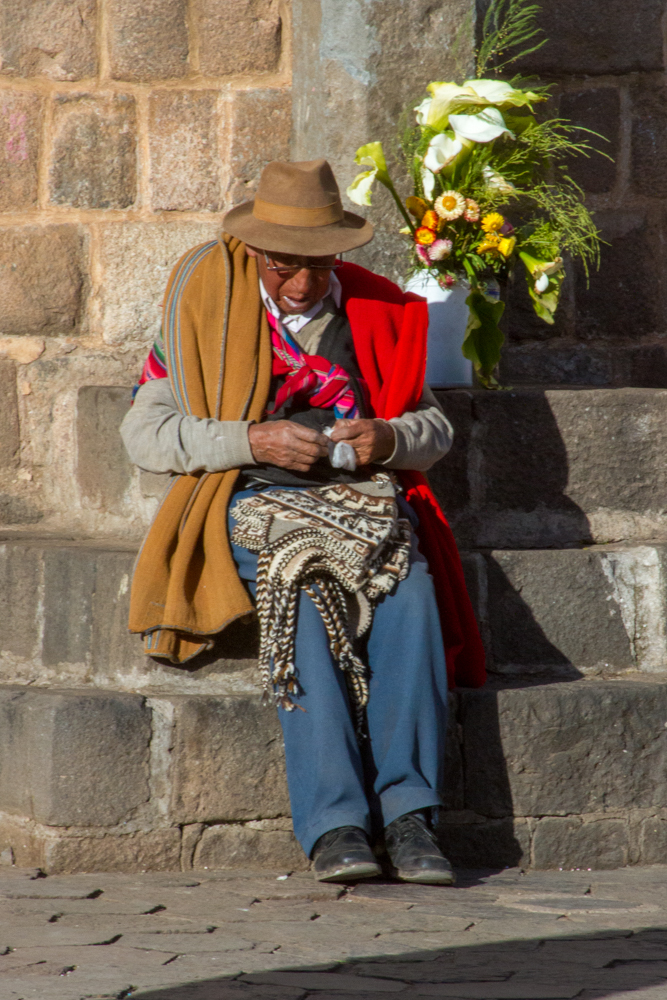
Spending Time on the Cathedral Steps
Our time in Cusco was both fascinating and relaxing. We wandered throughout the city, checking out many of the historical sites, and got to know some of the local people. We sampled and enjoyed the local food and drink and generally experienced the local vibes. I would highly recommend spending some time in this ancient city as a way to acclimate to the altitude, experience the Peruvian culture, and learn more about the amazing history of the Incan dynasty.


